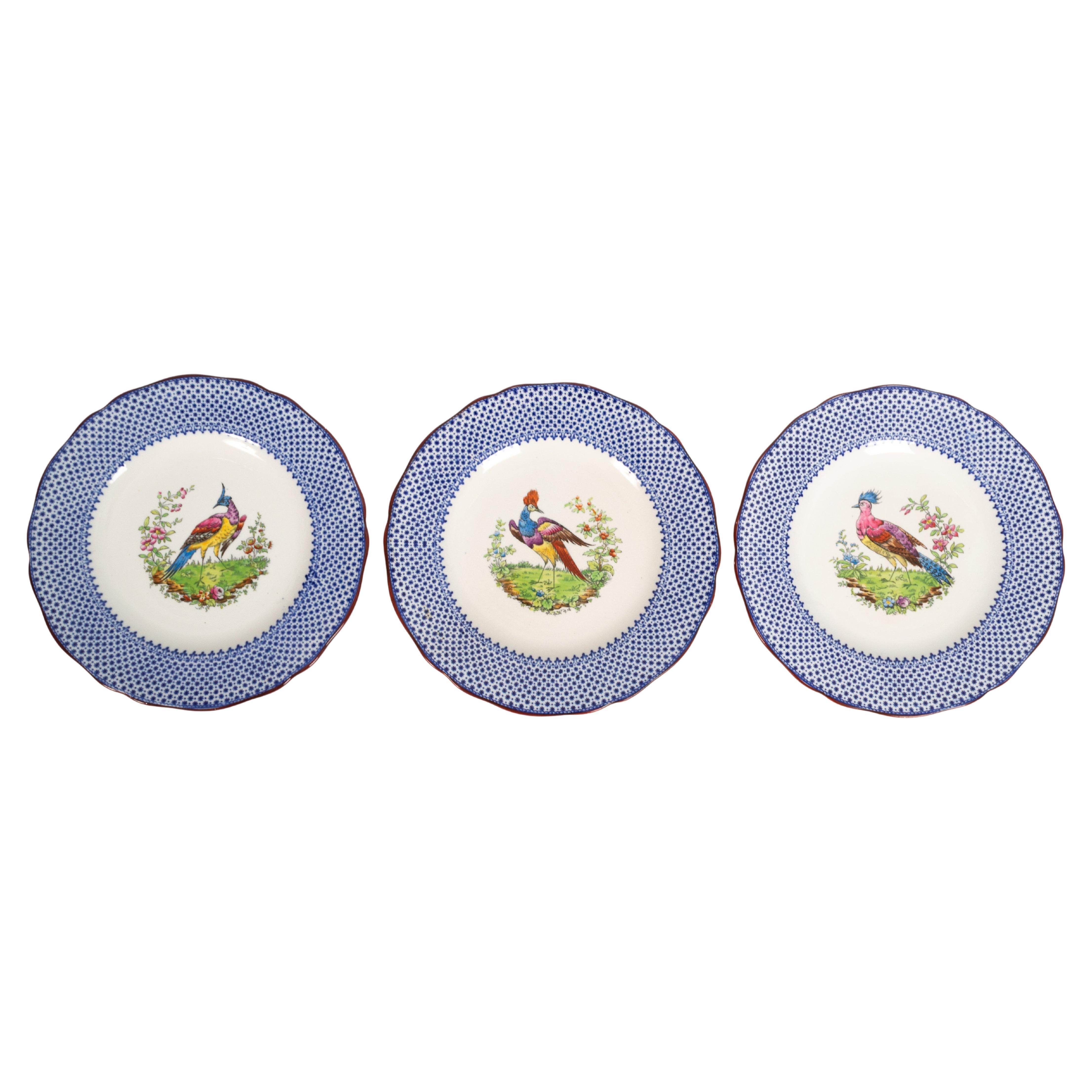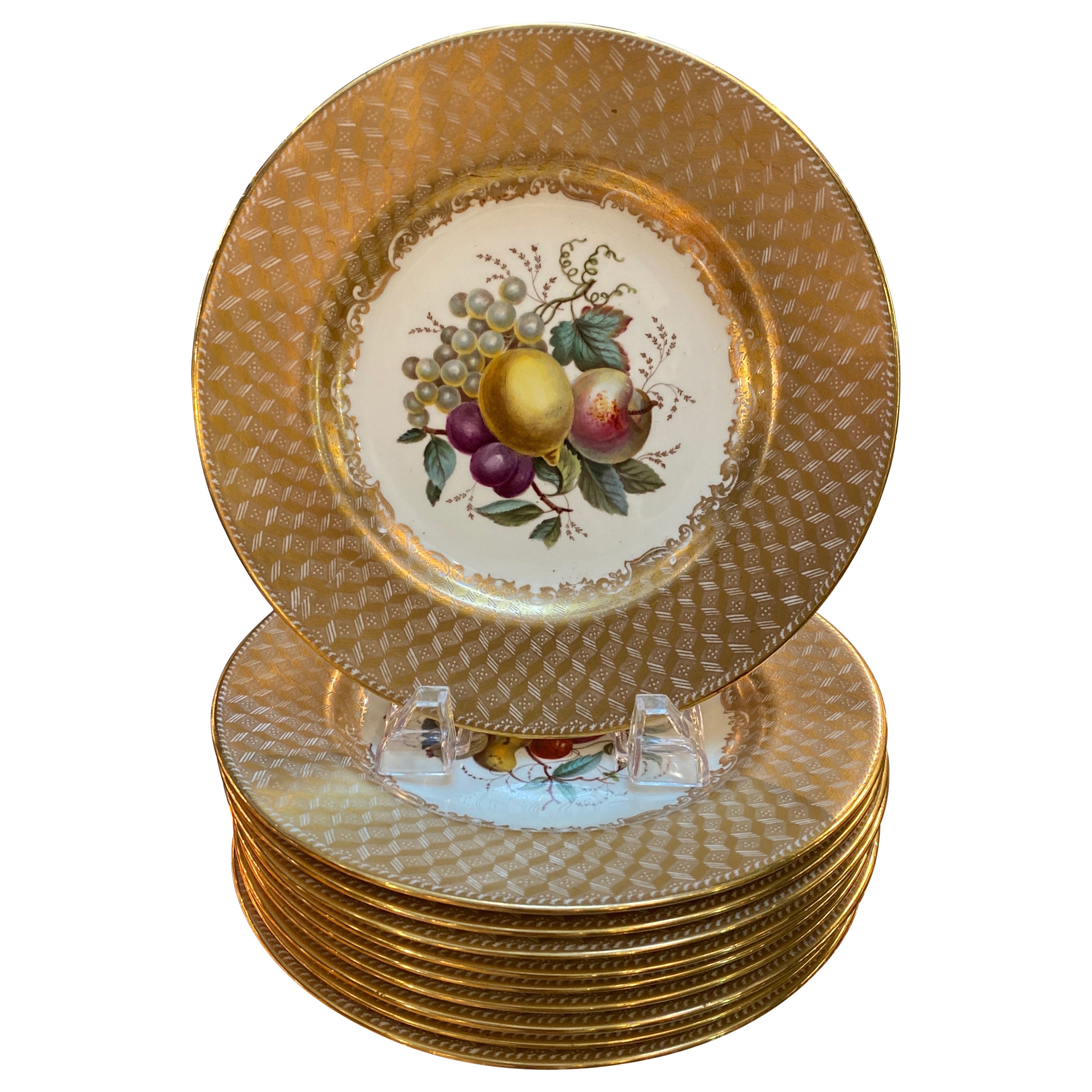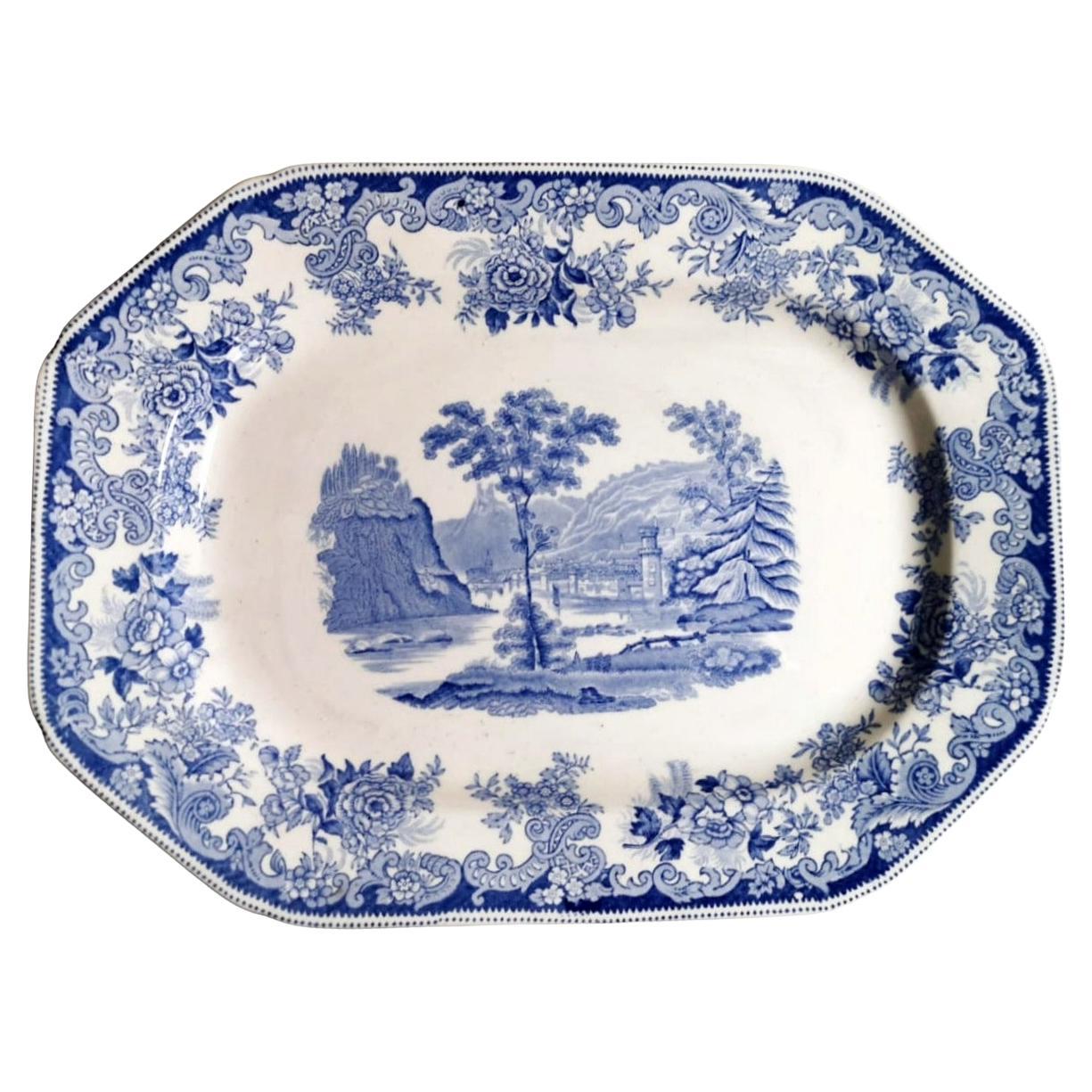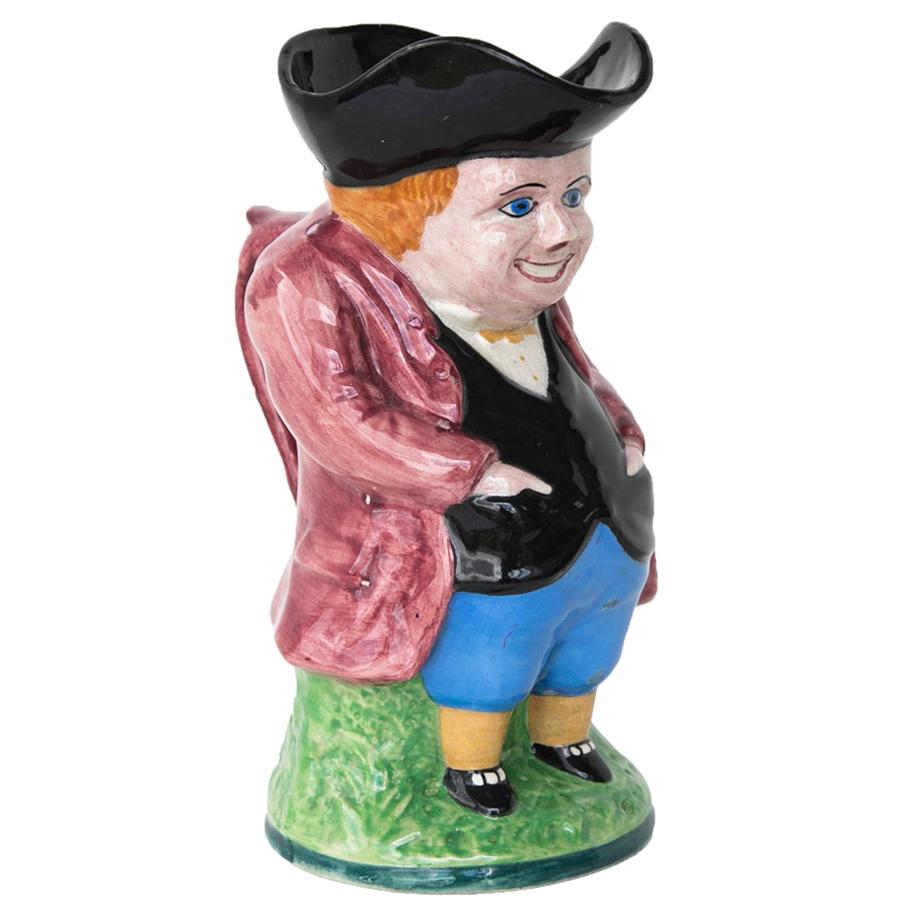Items Similar to Antique English Copeland Late Spode Toby Jug Pitcher Colonial Englishman
Want more images or videos?
Request additional images or videos from the seller
1 of 14
Antique English Copeland Late Spode Toby Jug Pitcher Colonial Englishman
About the Item
19th century Copland Late Spode English Staffordshire rare porcelain toby jug in the shape of asdeated colonial Englishman holding a cup and pitcher. 180288 “Spode is an English brand of pottery and homewares produced by the company of the same name, which is based in Stoke-on-Trent, England. Spode was founded by Josiah Spode (1733–1797) in 1770, and was responsible for perfecting two extremely important techniques that were crucial to the worldwide success of the English pottery industry in the century to follow.
He perfected the technique for transfer printing in underglaze blue on fine earthenware in 1783–1784 – a development that led to the launch in 1816 of Spode's Blue Italian range, which has remained in production ever since. Josiah Spode is also often credited with developing, around 1790, the formula for fine bone china that was generally adopted by the industry. His son, Josiah Spode II, was certainly responsible for the successful marketing of English bone china. Messrs Spode were succeeded in the same business in c. 1833 by Copeland and Garrett, who often used the name Spode in their marks. In particular these are called 'Late Spode' and include productions of the so-called 'Felspar porcelain'. They also produced other kinds of bone china, earthenware, parian, etc. The partnership continued in this form until 1847.[13] After 1847 the business continued until 1970 as W.T. Copeland and sons, and again the term 'Spode' or 'Late Spode' continued in use alongside the name of Copeland. Measure: 5".
- Creator:Copeland Spode (Manufacturer)
- Dimensions:Height: 4.75 in (12.07 cm)Width: 3.75 in (9.53 cm)Depth: 5 in (12.7 cm)
- Style:Federal (In the Style Of)
- Materials and Techniques:
- Period:
- Date of Manufacture:19th Century
- Condition:Wear consistent with age and use. Good Overall - Some staining; one chip to base.
- Seller Location:Dayton, OH
- Reference Number:
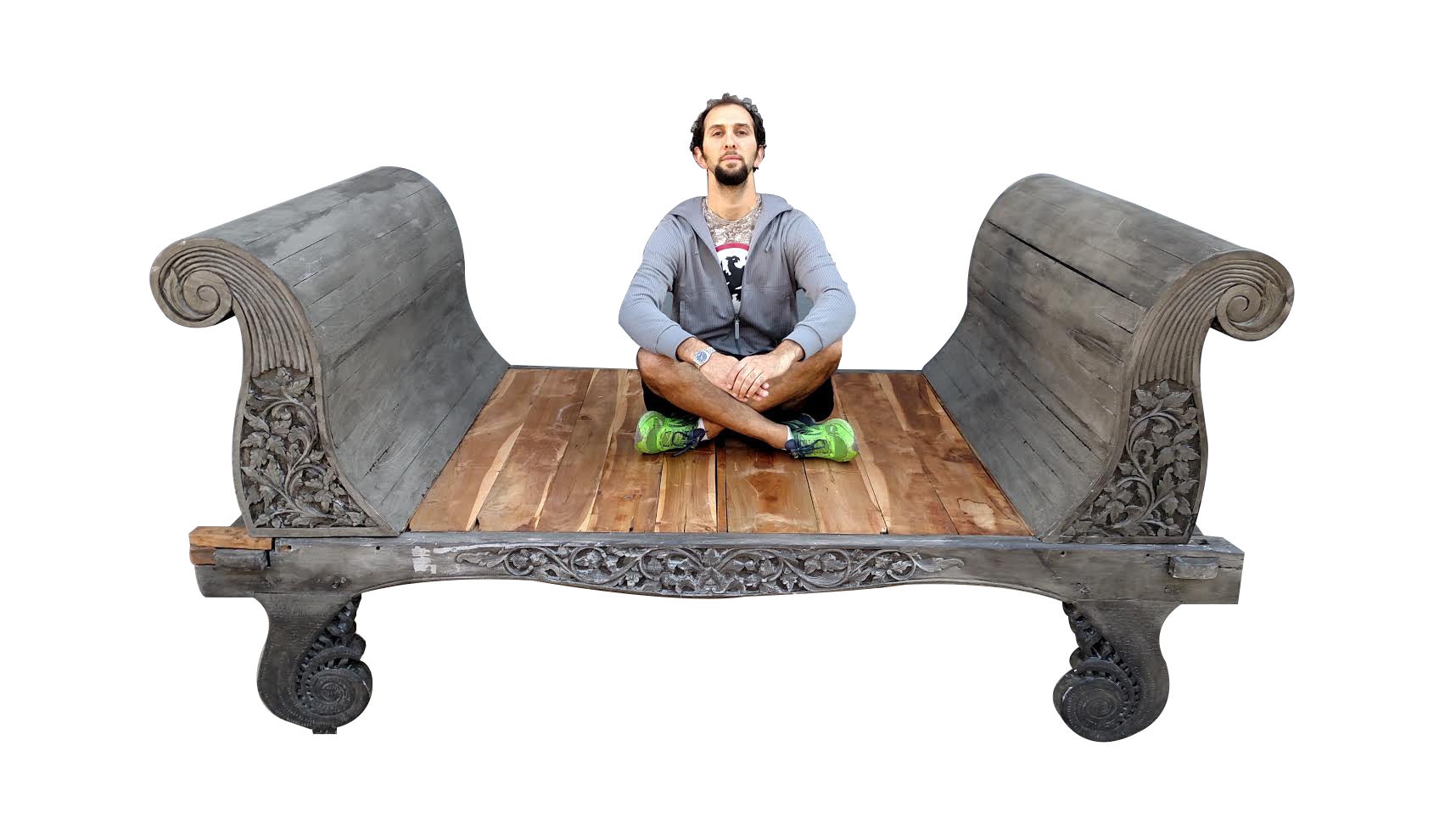
About the Seller
4.9
Platinum Seller
These expertly vetted sellers are 1stDibs' most experienced sellers and are rated highest by our customers.
Established in 2010
1stDibs seller since 2020
1,115 sales on 1stDibs
Typical response time: <1 hour
- ShippingRetrieving quote...Ships From: Dayton, OH
- Return PolicyA return for this item may be initiated within 2 days of delivery.
More From This SellerView All
- Antique English Staffordshire Transferware Serving Creamer Jug PitcherLocated in Dayton, OH"Antique 20th century Staffordshire transferware porcelain jug or pitcher featuring an English landscape in black, originally designed by James Cutts for W. Adams & Sons, and a yellow border around the upper edge. “James Cutts was born in 1808 in Pinxton, Derbyshire, he was the 9th of 10 children and the youngest of five boys. His father, John Cutts, was a moderately gifted china painter, trained at the Derby porcelain works, who moved to become manager of the Pinxton porcelain...Category
Early 20th Century Late Victorian Porcelain
MaterialsPorcelain
- Antique German Westerwald Reinhold Merkelbach Salt Glaze Pitcher Jug 14"Located in Dayton, OHAntique German Reinhold Merkelbach (1882-1933 star mark) cobalt blue salt glaze pitcher or jug featuring a heraldic theme with crest or shield and f...Category
Antique Late 19th Century Black Forest Ceramics
MaterialsStoneware
- Antique German Westerwald Merkelbach & Wick Salt Glaze Harvest Pitcher Jug 13"Located in Dayton, OHAntique German Westerwald Merkelbach and Wick cobalt blue salt glaze beer / drink pitcher / ewer / jug featuring a floral leaf theme with Gnomes / Dw...Category
Antique 19th Century Black Forest Ceramics
MaterialsStoneware
- Antique German Westerwald Salt Glaze Hunt Beer Stein Jug Pitcher 15"Located in Dayton, OHAntique German Westerwald cobalt blue salt glaze stein / ewer / mug / jug or pitcher featuring a floral motif with a pub or bar scene, figures, a dog...Category
Antique 19th Century Black Forest Ceramics
MaterialsStoneware
- Antique German Westerwald Cobalt Blue Salt Glaze Stoneware Pitcher Jug Ewer 17"Located in Dayton, OHAntique German Westerwald stoneware pottery decanter jug, ewer or pitcher. Made of cobalt blue salt glaze stoneware featuring a mythical gr...Category
Early 20th Century Black Forest Ceramics
MaterialsStoneware
- Antique German Westerwald Salt Glaze Months of Year Drink Pitcher Jug 11"Located in Dayton, OHAntique German cobalt blue salt glaze stoneware pitcher / jug / ewer featuring the face of Dionysus or Bacchus - God of wine - on the spout ...Category
Antique 19th Century Black Forest Ceramics
MaterialsStoneware
You May Also Like
- Set 3 Antique English Copeland Spode Chelsea Fantasy Bird Plates, circa 1910By Copeland SpodeLocated in London, GBSet 3 Antique English copeland spode chelsea fantasy bird plates circa 1910. English Bone China Stamped Spode, Copeland, England to base. In very g...Category
Vintage 1910s English Porcelain
MaterialsPorcelain
- Set of 10 Antique English Copeland Spode Hand Painted Fruit PlatesBy Copeland SpodeLocated in Lambertville, NJAn opulent set of 10 hand painted 9 inch diameter plates, England Circa 1900-1910. These plates with hand painted centers of fruit design with broad gold encrusted borders, Marked Co...Category
Antique Early 1900s English Edwardian Porcelain
MaterialsPorcelain
- Copeland-Spode English Tray with Blue Transferware DecorationsBy Copeland SpodeLocated in Prato, TuscanyWe kindly suggest you read the whole description, because with it we try to give you detailed technical and historical information to guarantee the authenticity of our objects. Elegant and refined English octagonal ceramic tray; on the white background, soft and rich blue decorations have been executed using the transferware method; in the center we find the poetic and graceful representation of the Severn River and the town of Bridgnorth (the name of this decoration is "Severn"), while the edges of the tray are adorned with sumptuous and spectacular flower and leaf decorations. The Severn River is the longest river in the United Kingdom (350 km), rising in Wales and flowing into the Bristol Channel; Bridgnorth is an ancient Saxon settlement; observing the view of the river and town from his castle at Bridgnorth King Charles I Stuart (1600-1649) said "the most beautiful sight in all my kingdom". On the back of the tray there are 3 imprinted marks including one with final number 14, then we find in the center a blue mark, these indicate to us exactly that the tray was produced in Stoke-on-Trent by the Copeland-Spode company in 1914 (see mark no.1079 p.172 of "Encyclopaedia of British Pottery and Porcelain Mark). The Spode firm was founded in the heart of the Potteries - Stoke-on-Trent by Josiah Spode in 1770. Josiah Spode is most famous for developing the specific design technique that meant underglaze transfers could be printed on earthenware. Later, focusing on porcelain production, Josiah Spode pioneered the development of a new form of porcelain, originally called "Stoke China...Category
Early 20th Century British Victorian Ceramics
MaterialsCeramic
- Copeland 'Spode' Porcelain Coffee Can Finely Hand Painted & Gilded, circa 1860By CopelandLocated in Lincoln, LincolnshireThis is a very beautiful English coffee can, all hand painted and gilded, made by Copeland China and with a factory printed mark to the base, dating...Category
Antique Mid-19th Century English Chinoiserie Ceramics
MaterialsPorcelain
- English Happy Toby JugLocated in Wilson, NCEnglish happy Toby jug, with his hands in his pockets and a variety of colors.Category
Antique 1870s English Ceramics
MaterialsEarthenware
- Set of 14 Copeland Late Spode Aesthetic Movement Green Parrot Dessert PlatesBy Copeland SpodeLocated in Great Barrington, MAThis wonderful set of 14 Copeland Late Spode dessert plates will surely add color and whimsy to your place settings. This pattern was originally in...Category
Early 20th Century English Porcelain
MaterialsPorcelain
Recently Viewed
View AllMore Ways To Browse
Silver Colonial A
English Antique Glass Company
Antique Chinese Earthenware
Antique Spode China
Mark Evers Antiques
Rare Italian Porcelain
Porcelain Italy Antique
Colonial Furniture Company
Antique Chinese Porcelain Cup
Antique Porcelain Spode
Spode Blue
English Spode
Porcelain Antique T
China Jugs
Antique English Silver Cup
Italian Pottery 19th
Chinese Jug
Chinese Jugs
